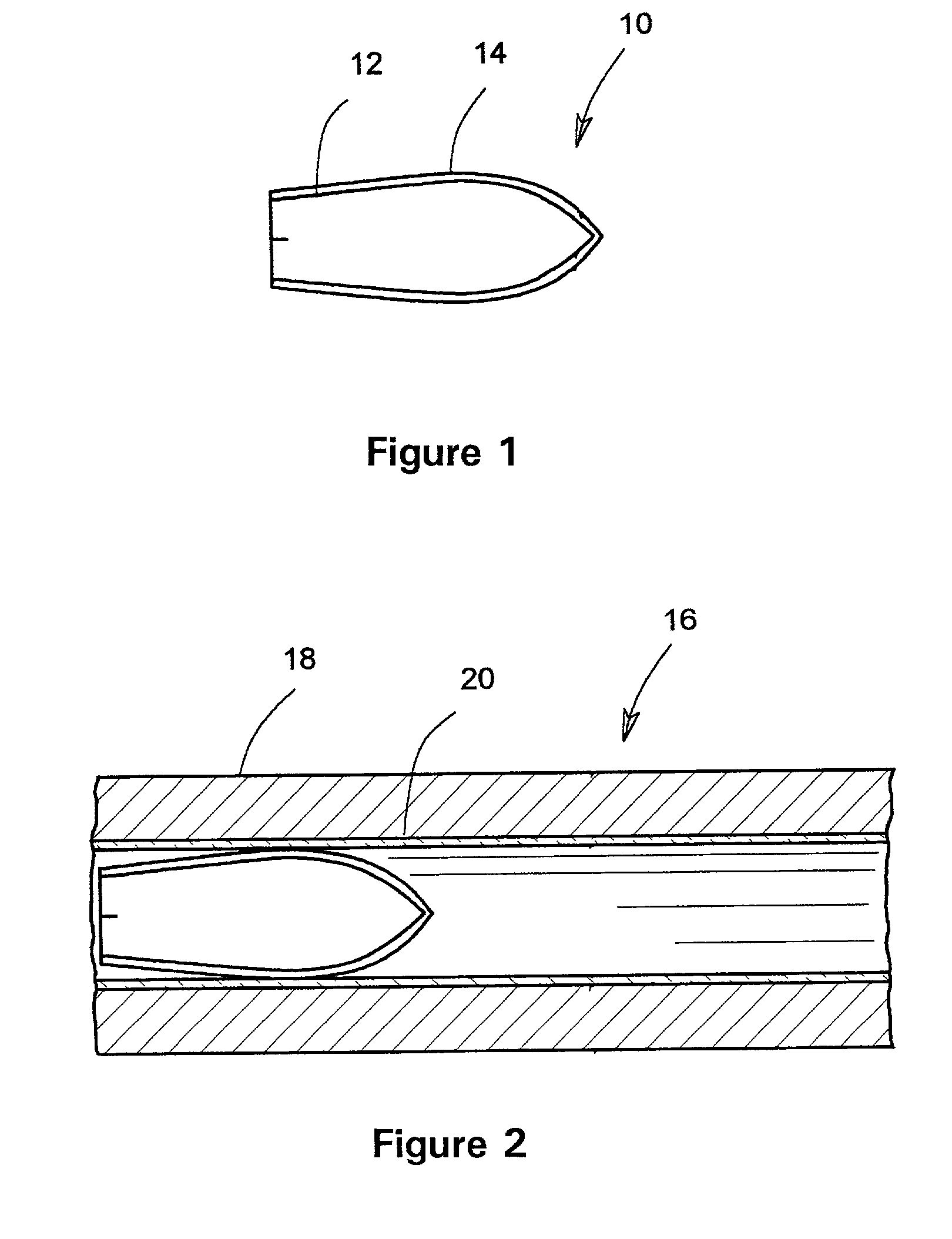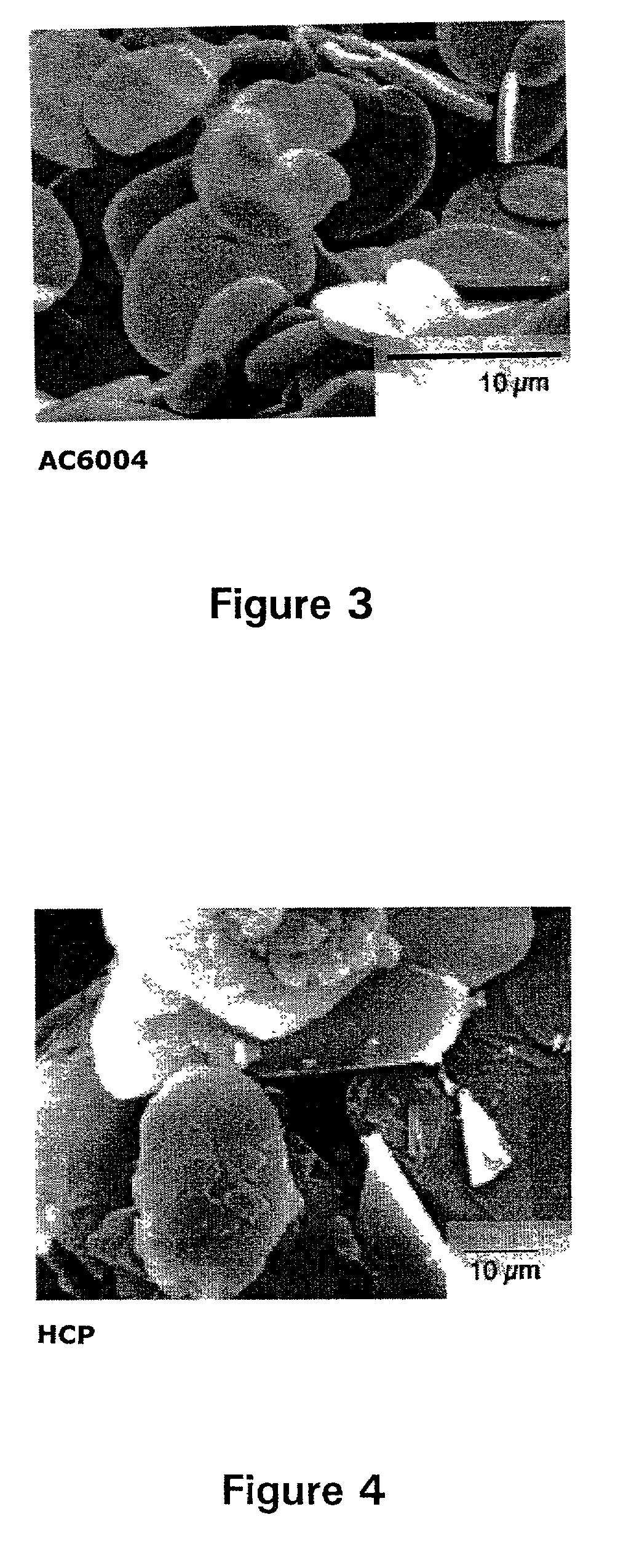Ballistics conditioning
a ballistics and conditioning technology, applied in the field of ballistics conditioning, can solve the problems of increasing frictional forces, projectiles can become so hot that they begin to soften, flow or melt, and achieve the effect of quick and easy spray coating
- Summary
- Abstract
- Description
- Claims
- Application Information
AI Technical Summary
Benefits of technology
Problems solved by technology
Method used
Image
Examples
Embodiment Construction
[0038] Referring to FIG. 1, a coated bullet 10 in accord with the present invention includes an underlying metal bullet substrate 12 coated with an overlying and firmly adhered first ballistic conditioning layer 14 comprising conditioner material and binder. The conditioner material is selected from the group consisting of hexagonal boron nitride, graphite 1, graphite 2, tungsten disulfide, antimony trioxide, talc, mica, and mixtures comprising any two or more of such conditioner materials.
[0039] Of the above group of conditioning materials, the hexagonal boron nitride is the most effective, and thus the most preferred. The next most effective, and thus next most preferred, materials are the graphite 1, graphite 2, and tungsten disulfide. Antimony trioxide, mica, and talc are generally used in combination with one or more of the preferred materials. While mica and talc are useful in combination with other materials, use of these materials without one of the more preferred materials ...
PUM
 Login to View More
Login to View More Abstract
Description
Claims
Application Information
 Login to View More
Login to View More - R&D
- Intellectual Property
- Life Sciences
- Materials
- Tech Scout
- Unparalleled Data Quality
- Higher Quality Content
- 60% Fewer Hallucinations
Browse by: Latest US Patents, China's latest patents, Technical Efficacy Thesaurus, Application Domain, Technology Topic, Popular Technical Reports.
© 2025 PatSnap. All rights reserved.Legal|Privacy policy|Modern Slavery Act Transparency Statement|Sitemap|About US| Contact US: help@patsnap.com



